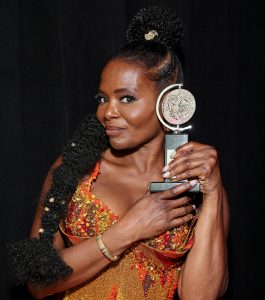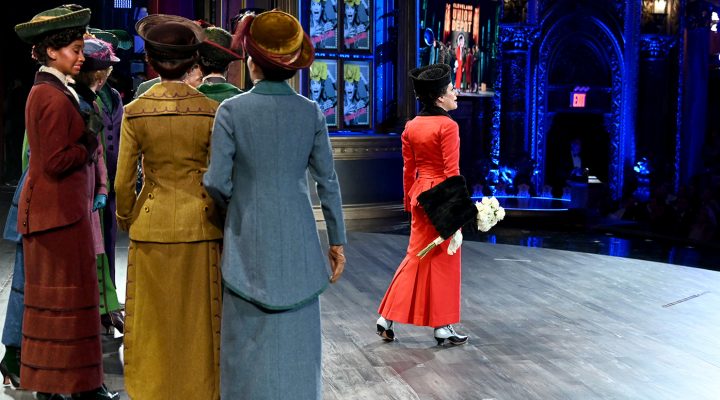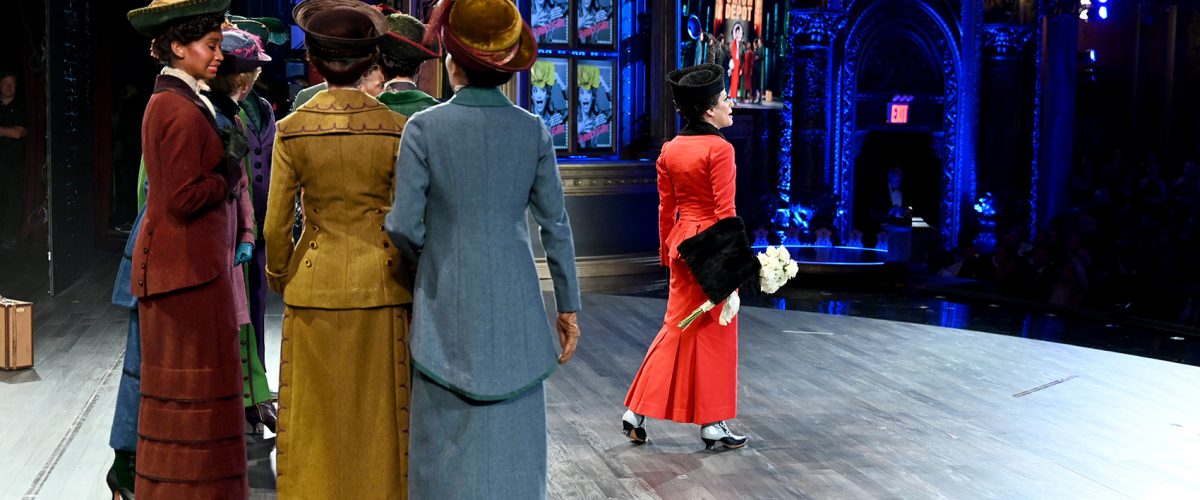The presenters sound like ministers winging the announcements.
I am watching The 76th Annual Tony Awards, celebrating the best of Broadway, and missing the writers.
The Writers Guild of America is on strike, so they came up with a curious compromise with the Tonys. They agreed to an “unscripted” broadcast. Presenters are not allowed to read off prompters, but they can use cue cards. The effect was amusing at first but then became depressing — like an unfortunate solo on Youth Sunday. (Imagine the opposite of Lea Michelle singing “Don’t Rain on My Parade.”)

Brett Younger
The shows nominated for Tony Awards can be depressing enough to make everyone want to go on strike. Broadway is all about heartache.
Leopoldstadt is a heart-wrenching play about a World War II-era Viennese Jewish family, many of whom die at the hands of the Nazis.
Prima Facie comes with a trigger warning. A criminal defense attorney must rethink her views after she is sexually assaulted.
Good Night, Oscar is the true story of Oscar Levant’s struggles with mental illness.
Life of Pi is about a boy who survives a shipwreck, but his family does not.
This year’s shows take tragedy seriously — war, antisemitism, misogyny, mental illness, death.
The revivals are depressing, too.
Parade is a painful story of antisemitism. In Atlanta in 1915, Leo Frank is arrested, sentenced, and lynched for the rape and murder of a teenager. The play concludes he was the innocent victim of prejudice.
Sweeney Todd is murder and revenge.
Camelot is adultery and war.
The Sign in Sidney Brustein’s Window ends with a suicide.
Funny Girl ends with a seriously rained-out parade as Fanny and Nick go their separate ways.

A view of the audience during The 76th Annual Tony Awards at United Palace Theater on June 11, 2023, in New York City. (Photo by Jenny Anderson/Getty Images for Tony Awards Productions )
Three new shows — Kimberly Akimbo, which won the most Tonys with five, Fat Ham, and New York, New York — had 22 Tony nominations and seem to fit the pattern of despair.
Kimberly Akimbo has a disease that causes her to age four times faster. Her life expectancy was 16. She is aging fast and surrounded by adults who never grow up — a hypochondriacal mother, an irresponsible father, and an aunt who has only terrible ideas.

Patrick Marber, winner of Best Direction Of A Play Award for “Leopoldstadt”, poses in the press room during The 76th Annual Tony Awards at Radio Hotel on June 11, 2023, in New York City. (Photo by Jemal Countess/Getty Images for Tony Awards Productions)
Fat Ham is Shakespeare’s Hamlet set at a North Carolina barbecue, a backyard celebration of Juicy’s mom’s marriage to his uncle a week after the death of his father. The father’s ghost demands that Juicy, a queer, Black, Southern, college kid, avenge his murder. Juicy asks, “What do you do when God don’t want you and the devil won’t have you?” The play deals with homophobia and the inherited trauma “of Black men going in and out of prison since the Civil War.”
New York, New York is based on the movie of the same name set just after World War II. Robert DeNiro and Liza Minnelli are musicians with big dreams that are not coming true. They want music, money and love and do not get them.
These three shows reflect a culture that leans in the direction of despair — disease, crime, murder, racism, homophobia, greed and shattered dreams. But then each show unexpectedly chooses not to give up and leaves room for hope.
The 1977 movie New York, New York ends with the star-crossed lovers breaking up. The new musical has a loud, happy ending. If they “can make it there, they can make it anywhere,” and they do.
Isn’t changing the ending an interesting choice?

LaChanze, winner of the awards for Best Musical for “Kimberly Akimbo” and Best Revival of a Play for “Topdog/Underdog,” poses in the press room during The 76th Annual Tony Awards at Radio Hotel on June 11, 2023, in New York City. (Photo by Cindy Ord/Getty Images for Tony Awards Productions)
In the original Hamlet, nine of the 11 characters die. Fat Ham is supposed to be the same tragedy, but Juicy does not want to go down the same road as his father. He longs for hope, love and joy. “To be or not to be?” — he wants to be. In the retelling, there are two deaths, still too many, but less than nine. Why would the playwright make the most famous tragedy hopeful?
Kimberly Akimbo ends not with Kimberly’s death, but with a love scene between a tuba-playing, high school über-nerd and a 16-year-old girl who looks like his grandmother. She has figured out how to live each day to the fullest. She wants to have an adventure while she can. The sun shines through the clouds. Hope overcomes tragedy.
“The 24-hour news cycle runs on misery about 23 of those hours.”
Why would Broadway celebrate optimism in a world that reveres pessimism? Our culture encourages us to give up and give in. Our national ethos promotes anxiety and belittles hope. We treat despair, relativism and cynicism as signs of intelligence. The 24-hour news cycle runs on misery about 23 of those hours.
One of the purposes of art is to challenge the status quo. When the culture is obsessed with the clouds, the best artists aim for the sun. When the national ethos seems to prefer darkness, the church has an opportunity to focus on light. Deconstruction makes room for reconstruction. People need sincerity, idealism and truth. When our country embraces gloom, Christianity points to a brighter day.
We do not have to deny the problems to recognize the joy beyond despair.
The church’s message is that we should not give up, except to give up our worries to God. We should not give in, except to give in to the love that brings God’s intentions in the world, in spite of what gets the most attention. When things are falling apart, God comes in a new way of seeing things and a new sense of purpose.
When it feels like whoever is supposed to be writing our story is on strike, the church gets to say, “Life can be a tragedy, but it is also a brand-new musical.”
Brett Younger serves as senior minister at Plymouth Church in Brooklyn, N.Y.


